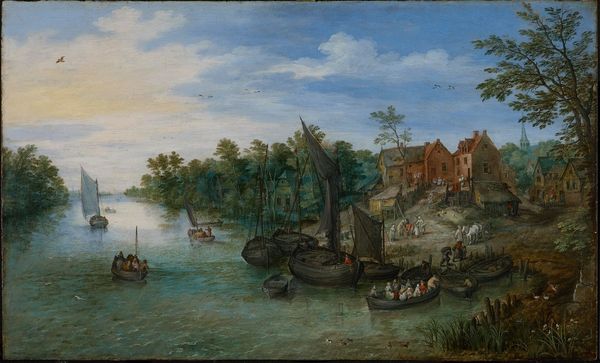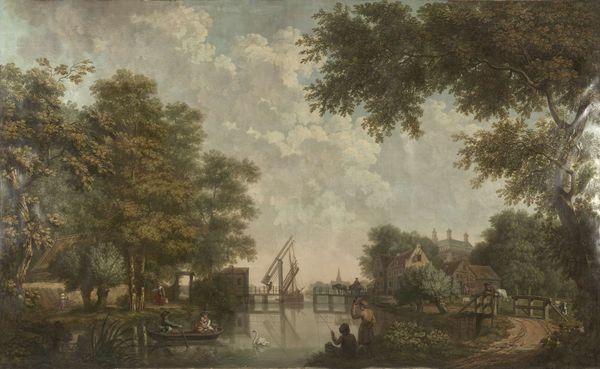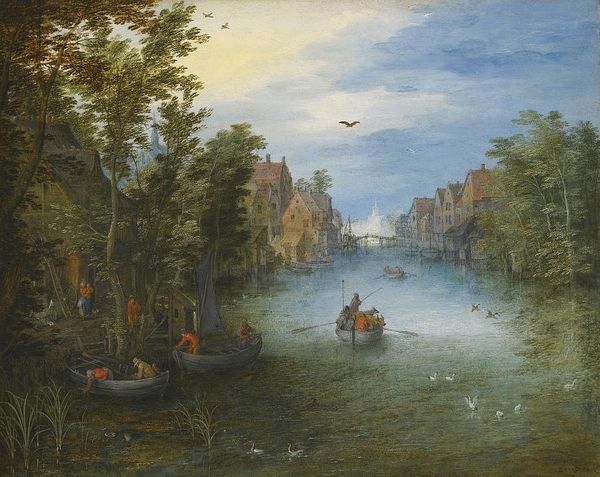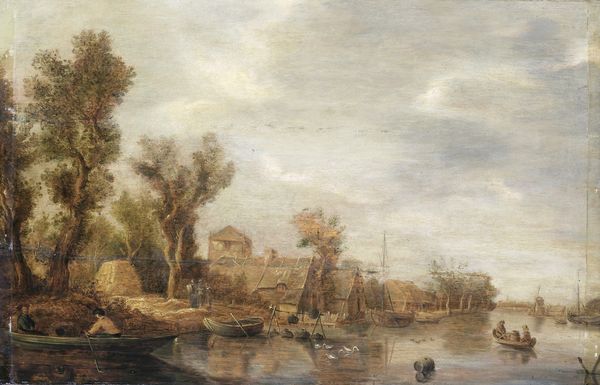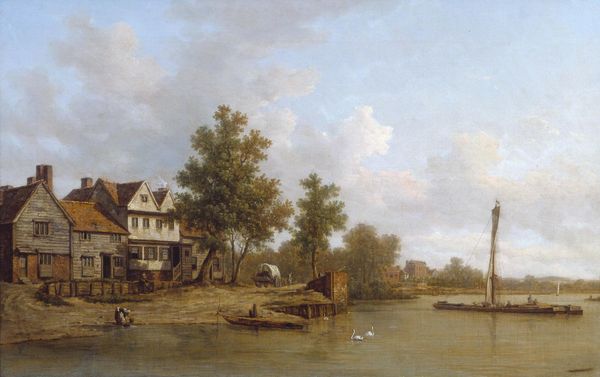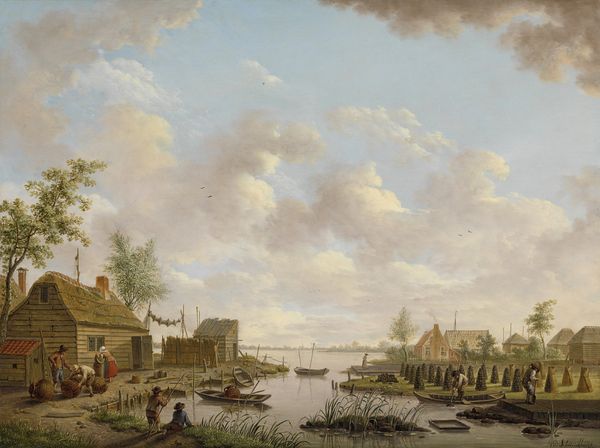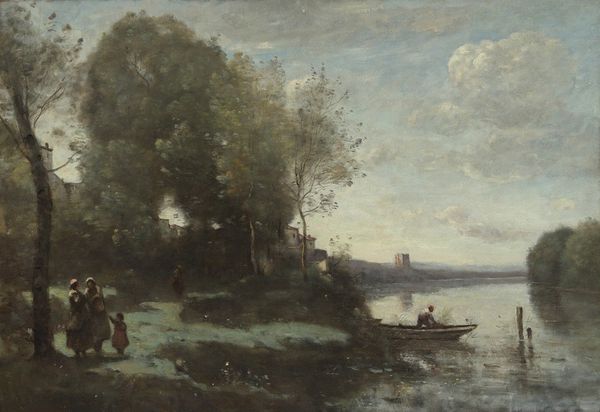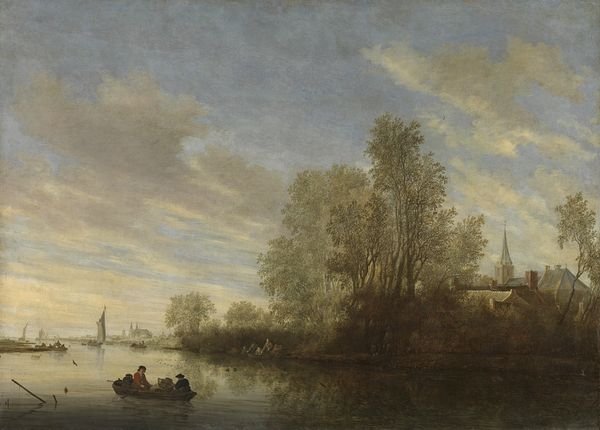
painting, oil-paint
#
baroque
#
painting
#
oil-paint
#
landscape
#
oil painting
#
cityscape
#
genre-painting
#
realism
Copyright: Public Domain: Artvee
Editor: This is Jan Brueghel the Younger's "View of a Village along a River," created in 1604 with oil paint. The texture seems so smooth, and the color palette is so serene; the misty atmosphere creates an intriguing haziness to the scene. What stands out to you in terms of its formal qualities? Curator: Immediately, I am struck by the interplay between the dense, verdant mass of trees on the left and the expansive, almost ethereal openness of the water and sky on the right. Notice how Brueghel uses a distinct contrast in tonal values to delineate these areas, pushing the village buildings into an interesting middle ground. This carefully considered juxtaposition establishes a visual tension, does it not? Editor: I see what you mean. It's like a controlled asymmetry. Does the technique give any clue about the intended effect on the viewer? Curator: Indeed, look closely at Brueghel’s meticulous brushwork. The miniature details, particularly in the rendering of the foliage and the figures, are astonishing. This precision directs the eye to appreciate the overall structure as a detailed microcosm of 17th-century life. But how might this very detailed realism function within the landscape convention of the time? Editor: Maybe it is a way to balance the realism with the prevailing baroque style, adding depth and richness. Curator: Precisely. The artist uses pictorial structure, texture, and details in unison. Consider that the formal structure mirrors broader philosophical shifts of the era, towards empirical observation within an established symbolic framework. Editor: This close analysis is fascinating. I initially just saw a pretty landscape, but it seems that by closely observing and analysing its formal qualities, it unlocks so much more about the painting itself. Curator: And that deeper understanding elevates our experience from simple viewing to considered appreciation. Thank you, your observations have also provided new insight into the painting for me as well.
Comments
rijksmuseum about 2 years ago
⋮
The workshop of Jan Brueghel I must have been a successful, well-run business. In addition to large paintings made on commission, it roduced an endless stream of landscapes for the free market. These small paintings were variations on a limited range of models. This landscape is a well preserved, finely executed – and probably autograph – example.
Join the conversation
Join millions of artists and users on Artera today and experience the ultimate creative platform.

